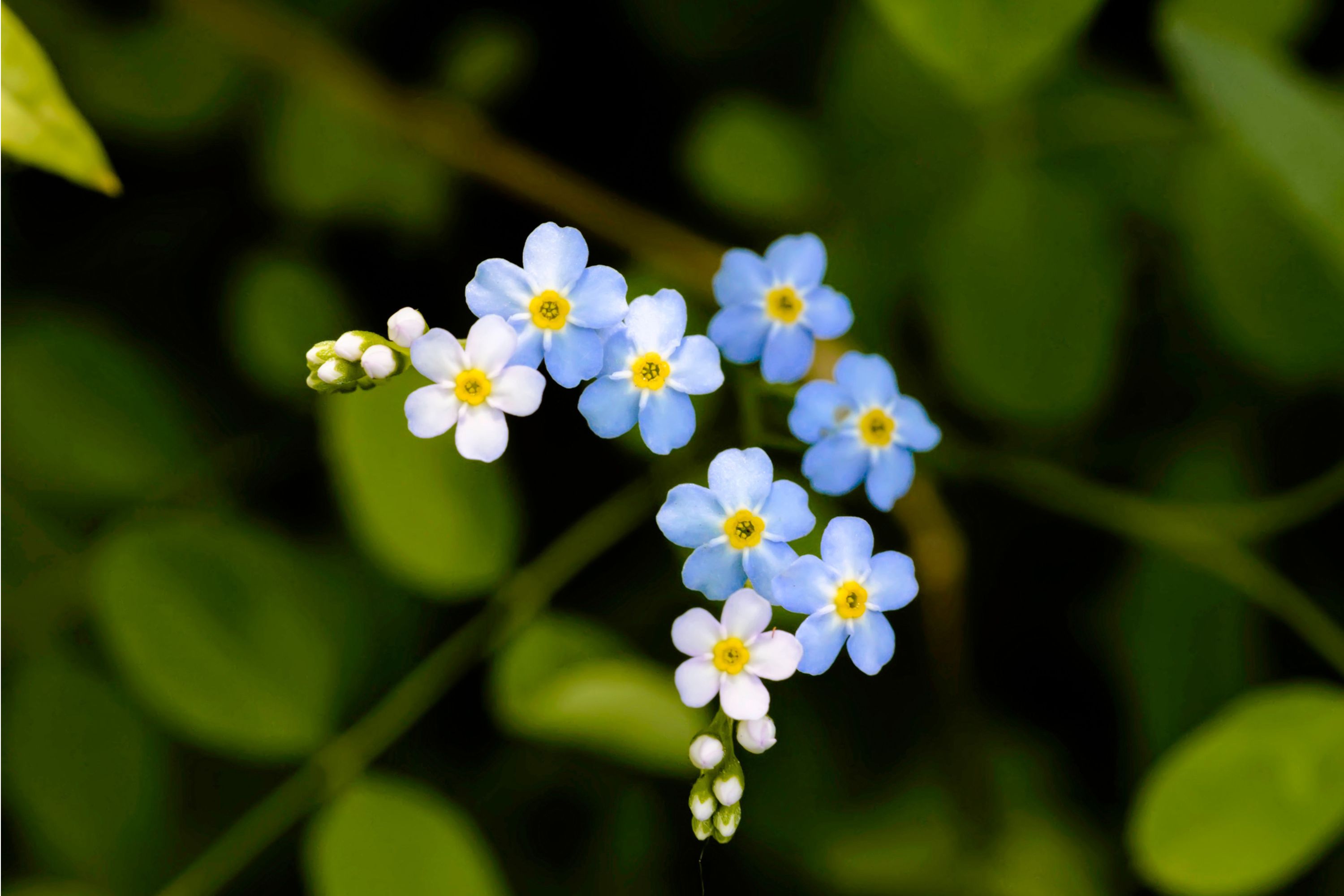Wood Forget-me-not
(Myosotis sylvatica)

Description
Myosotis sylvatica, commonly known as the woodland forget-me-not, is a species of flowering plant in the family Boraginaceae. It is a popular ornamental plant, known for its delicate blue flowers and easy care. In this article, we will explore the various aspects of Myosotis sylvatica, including its characteristics, growing conditions, uses, and potential risks. Characteristics Myosotis sylvatica is a perennial herbaceous plant that grows up to 30 cm in height. It has a basal rosette of leaves that are up to 10 cm long and 2.5 cm wide. The leaves are oblong to lanceolate in shape, with an entire or slightly toothed margin, and covered in fine hairs. The stem is erect, branching, and covered in short, stiff hairs. The flowers of Myosotis sylvatica are borne in loose, terminal clusters and are typically blue, although white and pink cultivars are also available. Each flower is approximately 1 cm in diameter and has five petals that are fused at the base to form a funnel-shaped corolla. The flowers bloom from late spring to early summer and are attractive to bees and other pollinators. Growing Conditions Myosotis sylvatica is native to Europe and Western Asia but has been naturalized in many parts of the world. It prefers moist, well-draining soil and partial shade but can also tolerate full sun. It is hardy in USDA zones 3-8, making it a popular choice for gardeners in temperate regions. To grow Myosotis sylvatica, sow seeds in the spring or fall, or plant seedlings in the spring. Space the plants 15-20 cm apart and keep the soil moist until they are established. Once established, they require minimal care, although they may benefit from occasional fertilization. Uses Myosotis sylvatica is primarily grown as an ornamental plant for its attractive blue flowers. It is often used in cottage gardens, rock gardens, and as a ground cover. It can also be grown in pots and containers, making it a versatile plant for use in various settings. In addition to its ornamental value, Myosotis sylvatica has also been used in traditional medicine. The leaves and flowers contain mucilage and tannins and have been used to treat respiratory and digestive ailments, as well as skin conditions such as burns and wounds. Risks Myosotis sylvatica is generally considered a safe plant, although there are a few potential risks to be aware of. Firstly, the plant contains pyrrolizidine alkaloids, which can be toxic if ingested in large amounts. While the alkaloids are present in low levels in Myosotis sylvatica and are unlikely to cause harm in small quantities, it is still advisable to avoid consuming the plant. Secondly, Myosotis sylvatica has the potential to become invasive in certain areas. It self-seeds readily, and if left unchecked, can spread and outcompete native vegetation. If you live in an area where Myosotis sylvatica is not native, be sure to keep it contained to prevent it from spreading. Conclusion Myosotis sylvatica is a beautiful and easy-to-grow plant that is well-suited to a range of garden settings. Whether you are looking to add color to a cottage garden or create a ground cover in a shady area, this versatile plant is sure to please. While there are a few potential risks to be aware of, with proper care and attention, Myosotis sylvatica can provide years of enjoyment and beauty.
Taxonomic tree:







